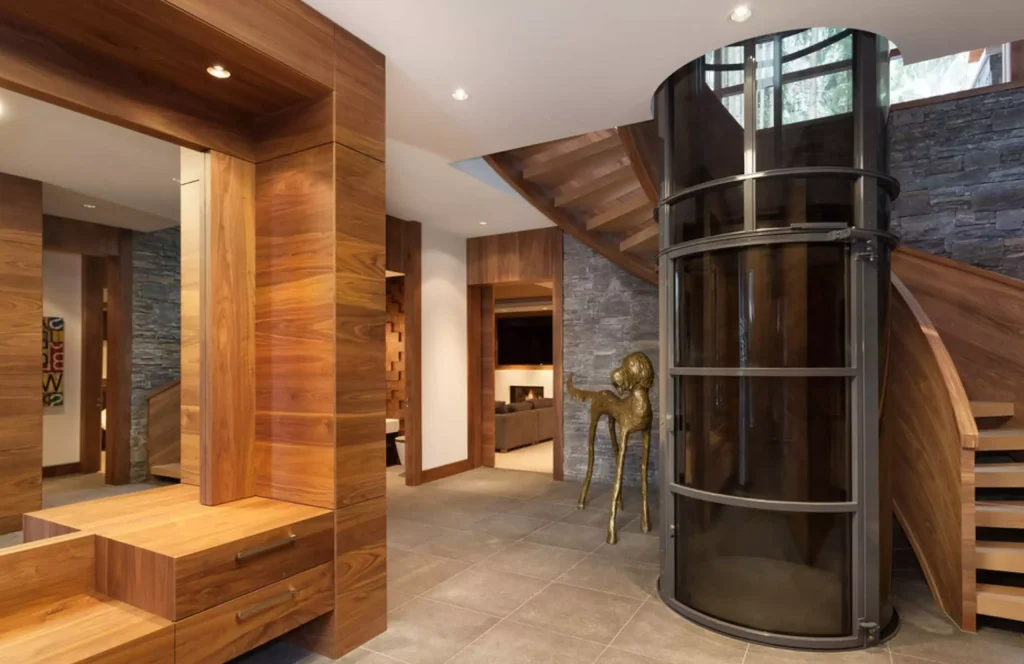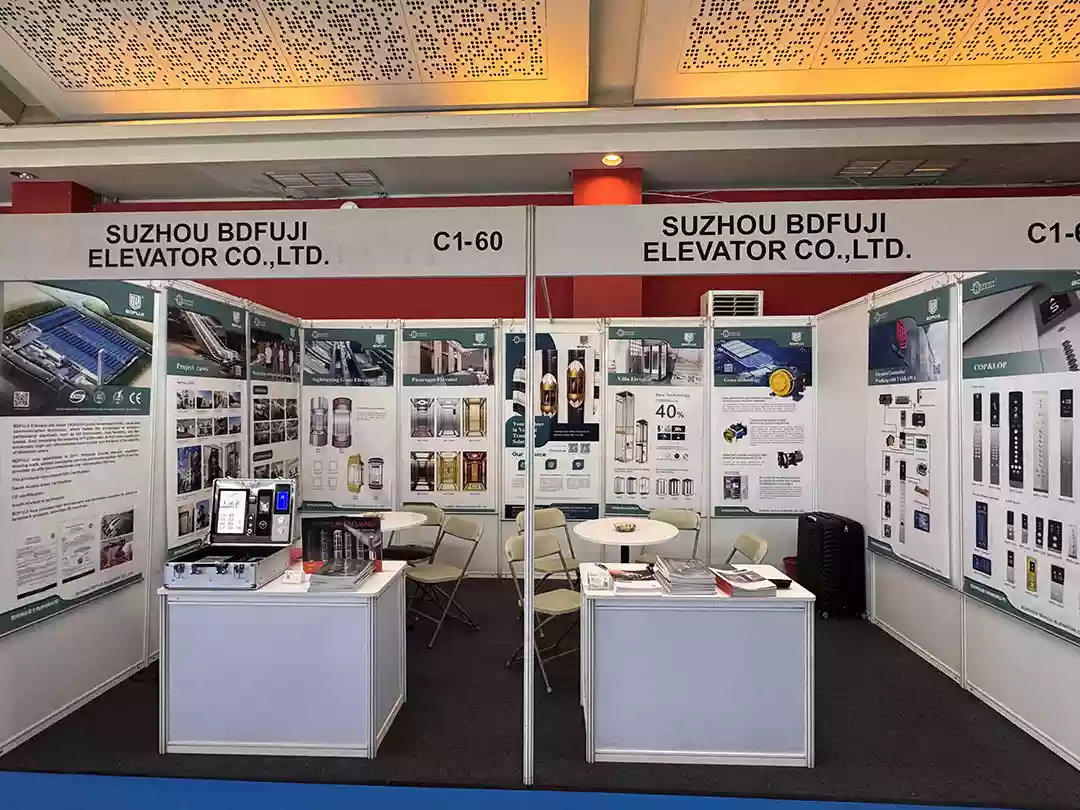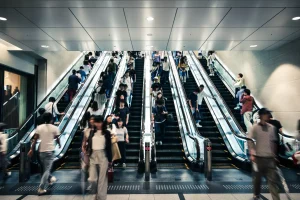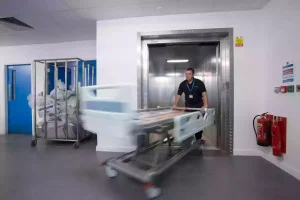Thinking about installing a home elevator in your house? Here is what you need to know and how to plan your budget wisely.
Whether you are adding an elevator to an existing home or planning one for a new build, a home elevator is not cheap. But it also does not have to use up all your savings.
In this 2026 guide, we break down home elevator costs by real market prices, elevator types and installation options.
Key Takeaways
- The total cost of a home elevator depends on the elevator type, number of stops, travel height and your house conditions. For a typical 2–3 stop home elevator, most full project costs fall between USD 20,000 and USD 50,000, and some high-end designs are higher than this.
- The equipment price is only part of the story. A realistic budget should cover: the elevator unit + shaft/structural works + installation and testing + permits/inspections + ongoing maintenance. Many “from USD X” prices online refer to the elevator unit only.
- Custom design and decoration can raise the cost very quickly. A glass shaft, full-height glass doors, special wall panels, designer lights and smart home integration can easily increase the basic cost of the same elevator by about 20% to 40%.
- Keep the layout and structure simple and choose durable, cost-effective finishes. Avoid unnecessary extra stops or an oversized cabin if you want to keep costs under control.
- Work with an experienced installer who can plan and coordinate the structural and electrical work smoothly.
Home Elevator Price Ranges (By Configuration)
Every project is unique, but having a rough cost estimate is always helpful. Below is a 2026 overview of typical home elevator installation costs, including equipment and basic installation, but not major structural changes or luxury finishes:
| Configuration | Typical use case | Approximate cost range* |
|---|---|---|
| 2-stop elevator (ground + first floor) | Small homes, duplex units, townhouses | USD 15,000 – 30,000 |
| 3-stop elevator (ground + 2 floors) | Common in multi-storey homes | USD 20,000 – 45,000 |
| 4-stop elevator | Larger villas and multi-level houses | USD 30,000 – 60,000 |
| 5+ stops | Very tall homes, private blocks | From USD 40,000 upwards (exact cost depends on the project) |
*These ranges are for reference only. Local labour costs, import duties, building codes and brand positioning (entry-level vs premium) can all have a big impact on the final price.
Cost Ranking by Elevator Type (From High to Low)
Generally, the cost of home elevators can be ranked from highest to lowest as follows:
Full-glass, imported screw-drive or shaft-less systems
Imported or high-end traction home elevators with custom glass shafts
Standard traction home elevators (masonry or steel shaft)
Simple hydraulic or platform lifts with basic configuration
What is Included in The Total Cost of a Home Elevator?
Instead of asking “How much is a home elevator?”, a better question is:
Below is a simple breakdown of the main cost parts for a typical 2–3 stop home elevator:
| Cost component | What it includes | Approximate share* |
|---|---|---|
| Elevator equipment | Car/cabin or platform, drive system, control panel, doors, rails, safety devices | 50–70% |
| Shaft / structure | Masonry shaft, steel shaft or self-supporting structure; pit and headroom works | 10–25% |
| Installation and commissioning | Delivery, lifting, on-site assembly, wiring, testing, safety checks | 8–15% |
| Finishes and options | Glass panels, stainless steel or special laminates, lighting, flooring, indicators, smart features | 5–15% |
| Permits and inspections | Design approvals, building permits, third-party inspections (varies by country/region) | 2–5% |
| Ongoing maintenance | Annual maintenance contract, spare parts, regular safety checks | Recurring yearly cost |
*These are typical ranges and not fixed rules. Some systems include the shaft in the equipment price, especially self-supporting or screw-drive models.
In Short
the elevator car and drive system are only part of what you pay for.
The shaft, structure, installation and long-term maintenance are just as important – and take up a big part of your budget.
How to Estimate The Cost of a Home Elevator
In many real projects, the elevator equipment makes up about 60% to 70% of the total budget. The remaining 30% to 40% is spent on the shaft, building work, electrical work and finishing.So you can take the price you get for the home elevator and add about 30% to 50% on top. This will give you a fairly reasonable project cost.
Then think about your home and your taste.If you already have a shaft and you are happy with a simple, practical cabin, your cost will usually be at the lower end of the price range.If builders need to cut through floors or build a new shaft, and you want glass, special lighting or designer finishes, your real cost will be close to the upper end of the range or a bit higher.
In general:
- A small basic home lift usually costs about USD 20,000 to 30,000.
- A standard home elevator usually costs about USD 25,000 to 45,000.
- A glass “feature” elevator usually costs about USD 40,000 to 80,000 or more.
Before you contact any elevator supplier, you can use this method to get a rough idea of your total home elevator cost.Cost by elevator type: pros, cons and budget expectations.
Costs by Elevator Type: Advantages, Disadvantages, and Budget
Traction Home Elevators – The Classic Choice
Traction home elevators are the “classic” style you see in many buildings, scaled down for houses. They are a good all-round choice if you have enough space for a shaft and want a smooth, familiar ride.
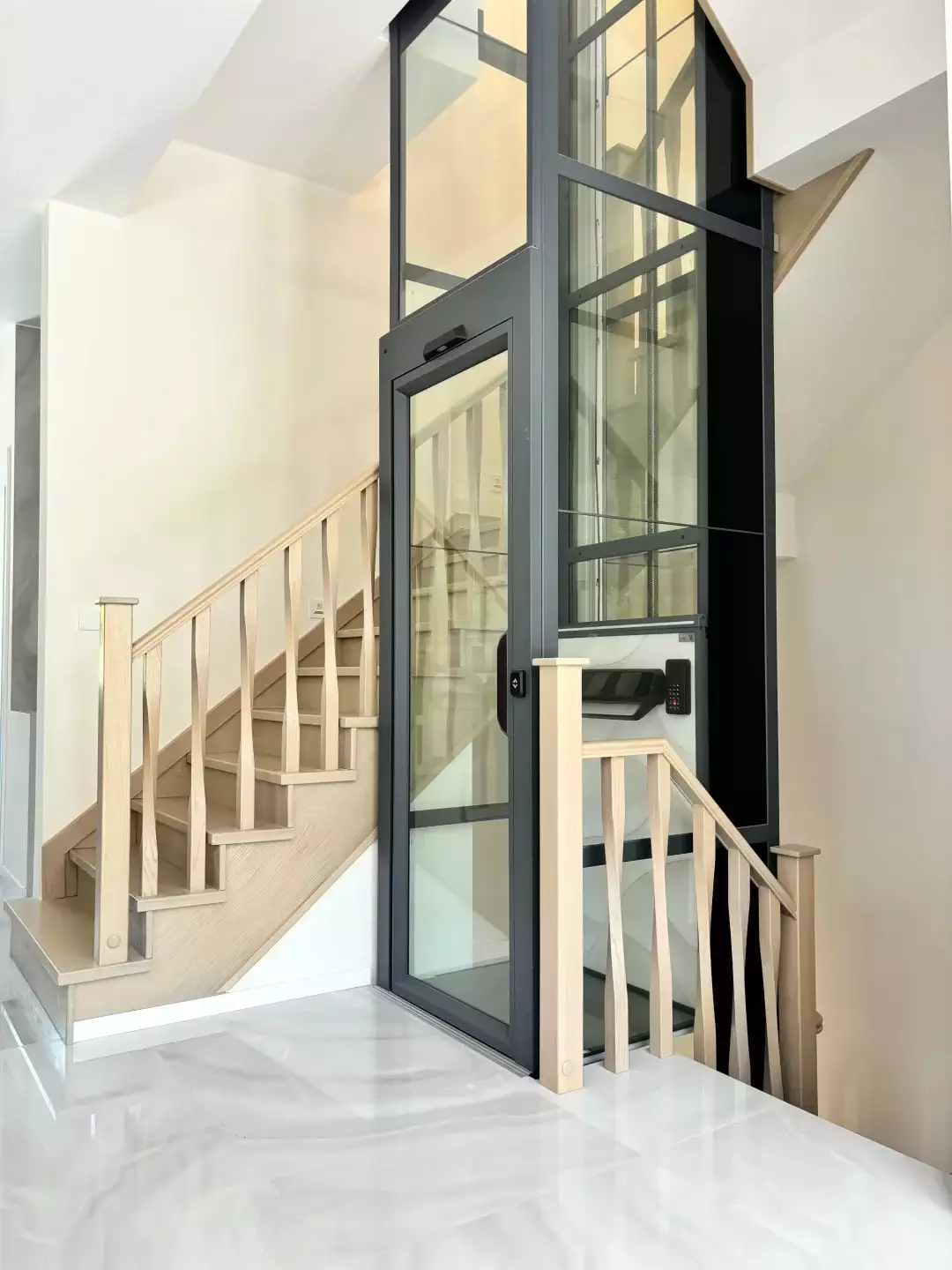
Where do traction elevators work best?
In most multi-storey homes that have enough space for a shaft, a traction home elevator is the “default” choice.
It uses ropes or belts with a counterweight, similar to a commercial elevator, but the speed and comfort are adjusted for residential use.
Why homeowners like them
This technology is mature and reliable. The ride is smooth, and energy use is quite efficient.
Most elevator service technicians are familiar with traction systems, so long-term maintenance is usually straightforward.
What to pay attention to
You do need a proper elevator shaft, and if your home was not designed with an elevator in mind, this may mean extra structural work.
A larger cabin, glass doors or extra openings between floors all look great, but they add complexity and cost.
Typical budget range
For a 2–3 stop traction home elevator with standard finishes, most projects cost between USD 20,000 and 40,000.
With higher-end interiors or a partly glass shaft, the total cost is often in the range of USD 30,000 to 50,000 or more.
Screw-drive / Self-supporting Elevators – Compact and Design-driven
Screw-drive or self-supporting elevators are often the “showpiece” lifts you see in photos, with a slim structure and a lot of glass. They are popular when you want a design feature and need to fit an elevator into a finished or tight space.
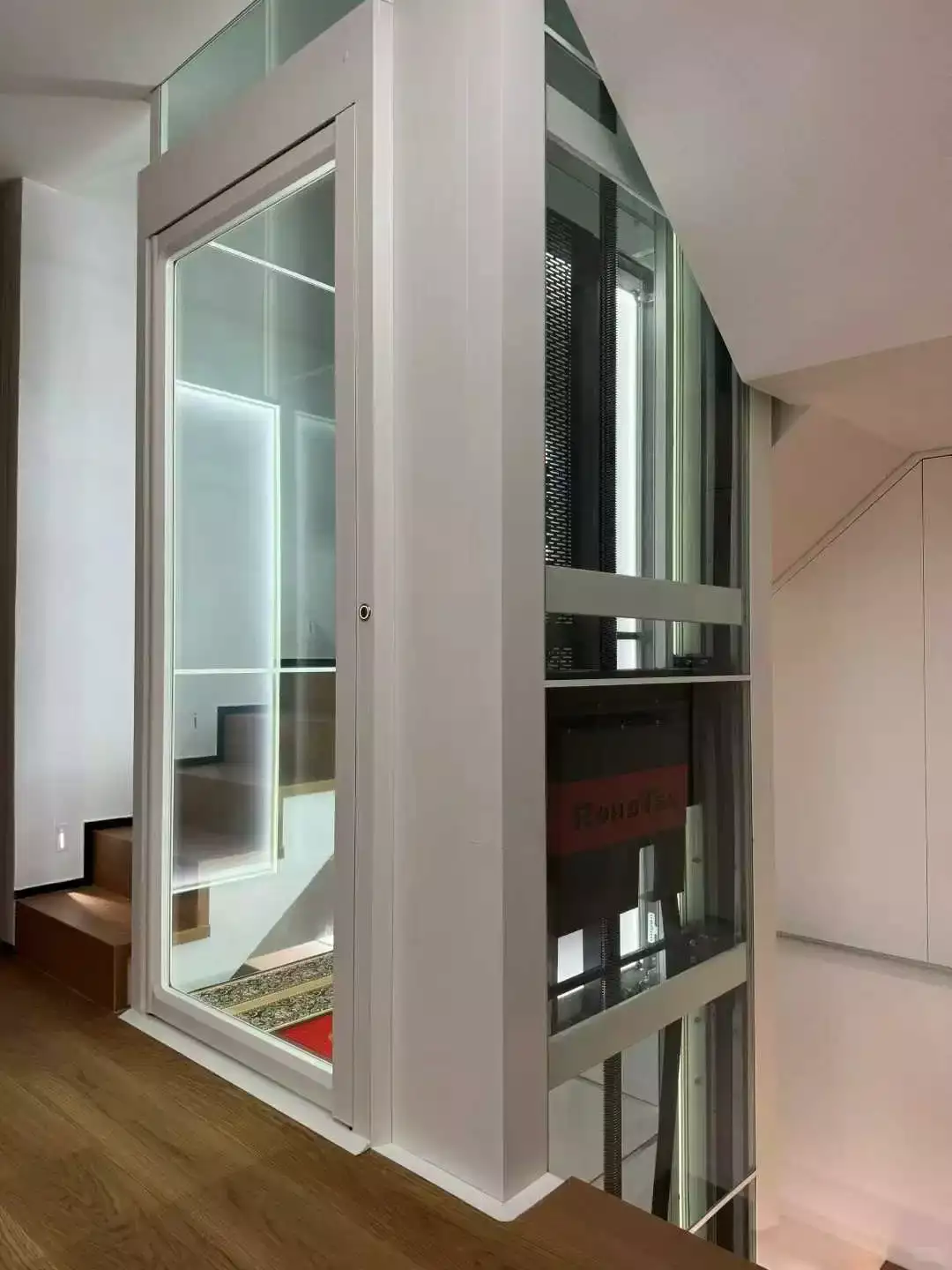
Where screw-drive elevators work best
These are the stylish glass or steel elevators you see in design magazines. They are self-supporting, so they bring their own structure.
They are great when you want to upgrade a finished home, when space is tight, or when you want to place the elevator beside the stairs or in the middle of an atrium.
Main advantages
Because the elevator comes with its own support frame, you can avoid very heavy building work. At the same time, you get a very clean, modern look.
Visually, these elevators feel more like part of the interior design than a piece of machinery.
Trade-offs and limits
This design also means a higher price. You pay for the elevator, and also for a custom structure with lots of glass and metal parts.
The way it rides and the way it is serviced are not the same as traction elevators. So it is very important to choose a trusted brand and a local partner who can service it well.
Typical budget range
For a two- or three-stop screw-drive home elevator, high-end imported systems usually cost about USD 35,000 to 80,000 or more.
Simpler or locally made versions are more likely to cost between USD 25,000 and 45,000, depending on quality and options.
Hydraulic Lifts and Platform Lifts – Simpler Mechanics, More Economical
Hydraulic and platform lifts are usually the most basic way to move people or wheelchairs between levels. They are often chosen when you need short travel and simple access, rather than a full “lift cabin” experience.
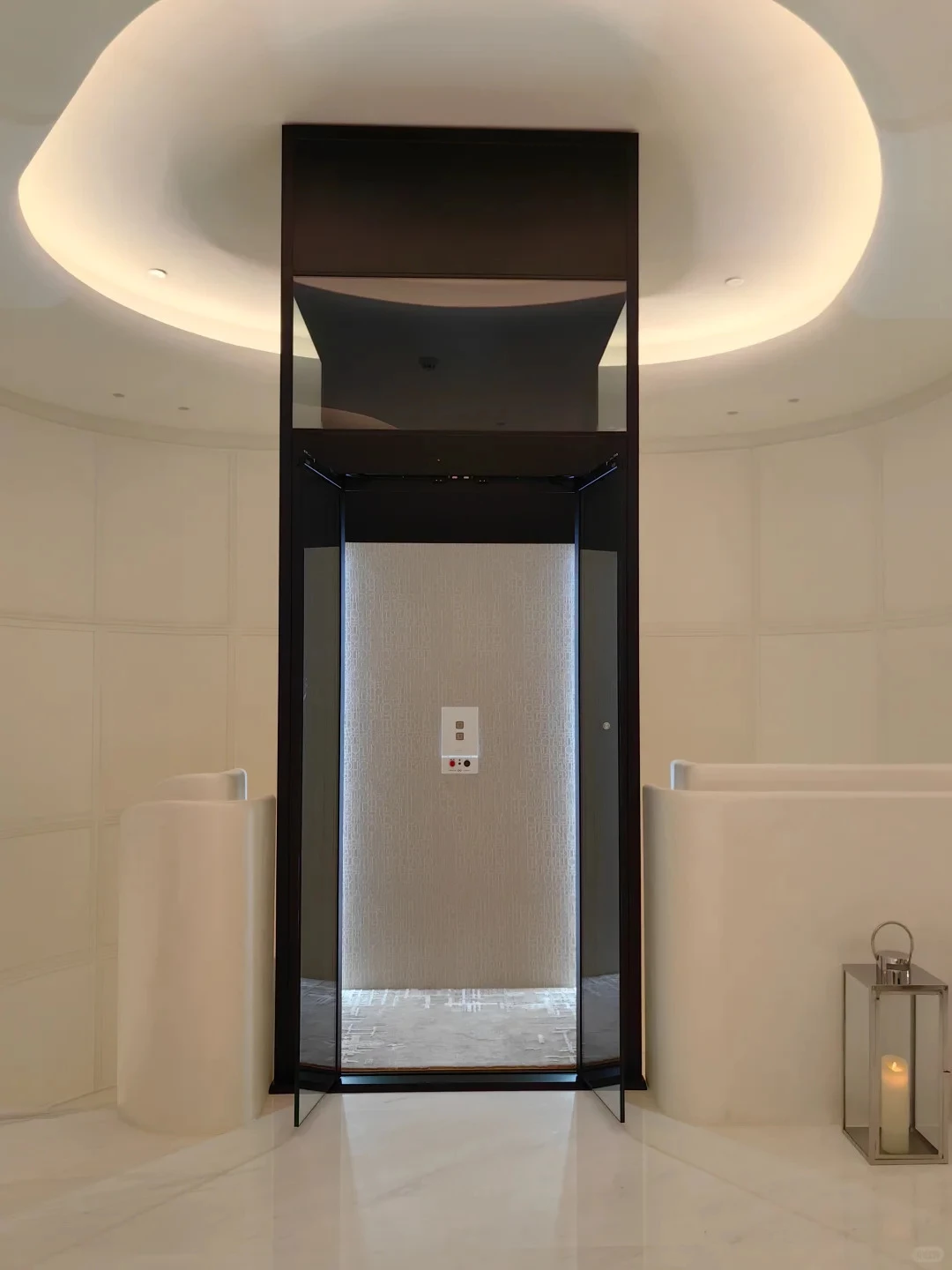
Where hydraulic/platform lifts are suitable
If your main goal is basic step-free access over a short travel height, a hydraulic lift or a platform lift can be a practical choice.
A pump moves a piston or platform, so the design is usually simpler than a full cabin elevator.
Advantages of this option
For 2–3 stops and lower load needs, these systems are often cheaper and faster to install.
They are common in small homes, side entrances, or as helper lifts for wheelchair users.
Points to watch
You need to pay attention to noise from the pump unit, oil leaks and energy use, especially if the lift is close to bedrooms or living areas.
Not all platform lifts meet the same standard as certified home elevators. So it is important to follow local rules and to have strong after-sales support.
Typical budget range
In general, basic platform lifts usually cost between USD 15,000 and 25,000,
while more enclosed cabin-type hydraulic elevators with doors and interior finishes often cost around USD 20,000 to 35,000 or more.
Key Factors That Affect Home Elevator Cost
When people talk about the cost of a home elevator, they often think only about the type of elevator and the number of floors. In fact, some hidden factors can influence the final cost just as much as the basic setup.
Brand and Local Support
The brand of the home elevator has a direct impact on price. Large international brands usually charge more. They often have long histories, strict testing and strong service networks. Regional brands or OEM brands can give good value, but their quality and after-sales support can be very different.
In simple words, you are not only buying an elevator for this year. You are also buying the ability to get spare parts, skilled technicians and reliable advice ten years from now.
Building Conditions and Shaft Design
The building itself can be a major cost driver. If the architect has already left a shaft or empty space beside the stairs, the structural changes may be very small. If not, you may need to cut the floor slabs, add beams and columns, or even change the roof to reach the needed travel height.
Installing an elevator indoors, in a protected area, is usually simpler. An outdoor elevator that faces wind and rain needs more steel, cladding and weather protection. In some homes, building changes are minor. In others, building work may become the biggest part of the budget.
Cabin Size, Load and Speed
Cabin size and load might look like small choices, but they change the inside of the elevator. A bigger cabin and higher load need stronger rails, a larger motor and a stronger supporting frame. Higher speed may also mean extra safety parts and a more complex control system.
For most families, a medium load (about 250–400 kg) and normal home speed are enough. Asking for more load and more speed adds cost and may not make daily use much better.
Finishes and Design Options
This is often where the budget quietly grows. Full-height glass doors, panoramic glass, designer stainless steel, special laminates, LED feature lights, mirrors, custom ceilings and built-in screens all make the elevator look and feel more high-end. But none of these are needed for safe operation. They are mainly for style and mood.
A premium finish package often adds 20% to 30% on top of the basic price, because every “nice extra” brings its own cost.
Codes, Permits and Inspection Requirements
Safety rules and permits also matter a lot. Every country – and often every city – has its own rules for home elevators: minimum safety devices, emergency communication, fire and escape requirements, and how often the elevator must be checked.
In some places, home elevators must follow standards that are very close to commercial lifts. This increases cost, but it also gives a higher safety level.
In other places, rules are more relaxed. This can lower installation cost, but it means you must be extra careful to choose a supplier that will not cut corners on safety.
Practical Tips to Save on Total Home Elevator Cost
If you already have a rough idea of how much a home elevator might cost, this part helps you answer another question: How can you get better value for money and avoid wasting your budget?
Know The Purpose of The Elevator
Before you choose a brand or model, it helps to ask a simple question: what does this elevator mean for this home?
If your main goal is to help older family members and make the home step-free, your budget should go first into proven drive and control systems, full safety features and a solid maintenance plan. These are the “hard rules” that decide if the elevator can run safely for many years.
If you care more about daily comfort, how the space feels and future resale value, then after basic safety and performance are covered, you can spend a bit more on a glass shaft, nicer finishes and overall design. But the bottom line is: never reduce reliability and safety just to make the elevator look better.
Simplify The Layout
There is a very simple rule for home elevators: the simpler the structure, the easier and cheaper the project.
More stops, extra doors on the same floor, non-standard shaft sizes and odd shapes all push up the cost of building, steel work and installation.
If the floors line up well, the shaft is a simple rectangle, and doors only appear where they are really needed, design and construction are smoother, and the budget is easier to control. You are less likely to see the building cost “climb and climb”.
Set Aside an Emergency Budget
In elevator projects, it is very common for the budget to be eaten up bit by bit.
After opening the floor, the team finds extra steel beams are needed;
after seeing the first layout, you want to change the door position a little;
after seeing real interior samples, you decide to upgrade the ceiling or floor.
Each change alone is not a big problem, but together they become a serious extra cost.
So it is wise to set aside 10%–15% of your total budget as a contingency fund, from the start. Count these likely but hard-to-measure changes as part of the “total cost”, instead of being forced to fix the budget later when you go over it.
Control Scope Creep
“Scope creep” means your project keeps growing after it has started:
“Maybe add one more glass panel?”
“The premium ceiling can’t cost that much more, right?”
“Since we’re doing this, why not make the cabin a bit bigger?”
Each choice looks small, but together they can easily move you from mid-range into high-end pricing.
To avoid this, try to decide as much as you can before signing the contract: the number of stops and doors, cabin size and load, the general level of wall and floor finishes, ceiling and lighting ideas, and whether you really need smart home features or remote monitoring.
Then any changes later are clear and conscious choices, not quiet additions that make the project more and more expensive without you noticing.
Compare The Full Offer
When you compare suppliers, always look at the total offer, not just the lowest number on the first page.
Some quotes include only the equipment. Some include equipment plus installation and testing. Others may also include delivery, lifting, wiring and support for inspection. If you only look at the “unit price”, it is hard to see which offer is truly better value.
A smarter way is to compare at least three to five suppliers, and put in one table: equipment, installation, testing, warranty length and coverage, and yearly maintenance cost after the warranty ends.
Many times, a supplier with a slightly higher starting price but a strong service system and clear maintenance costs will save you more money and stress over the 10–15 years you use the elevator.
Home Elevator FAQs
How Can I Lower The Total Cost of a Home Elevator?
You can lower costs by choosing the right home elevators type and size for your needs, avoiding unnecessary extras, and planning ahead for installation. Regular maintenance also helps prevent expensive repairs later.
Which Type is Cheaper: a Hydraulic Home Elevator or a Traction Home Elevator?
For the same size and number of stops, hydraulic home elevators usually cost less at the start. But traction home elevators are more energy-saving and durable, so in the long run they can be the cheaper option.
Ready to Plan Your Own Home Elevator Budget?
BDFUJI Elevator designs and manufactures home elevators for houses, villas and small residential blocks around the world. We work with homeowners, architects and contractors to match the right elevator type, size and finishes to each project and budget.
If you share your floor plans, number of floors and a rough budget range, our team can suggest 2–3 suitable options (basic, standard and feature glass designs) and give you a clear, itemised quotation. That way, you know exactly what you are paying for – equipment, shaft structure, installation and maintenance.
specialists and start turning this guide into a real, costed plan for your home.


